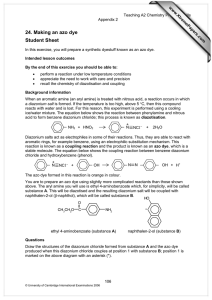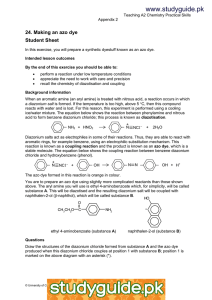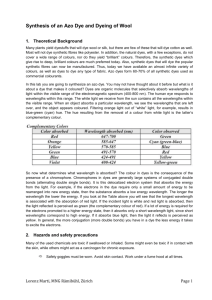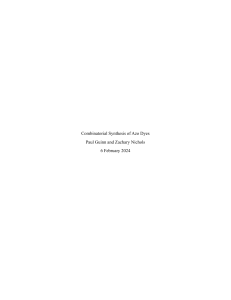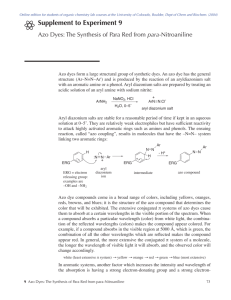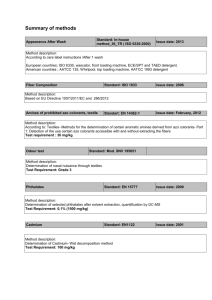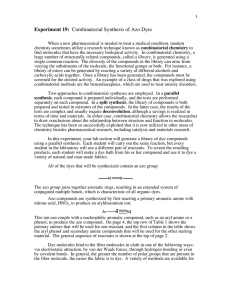56. The microscale synthesis of azo dyes
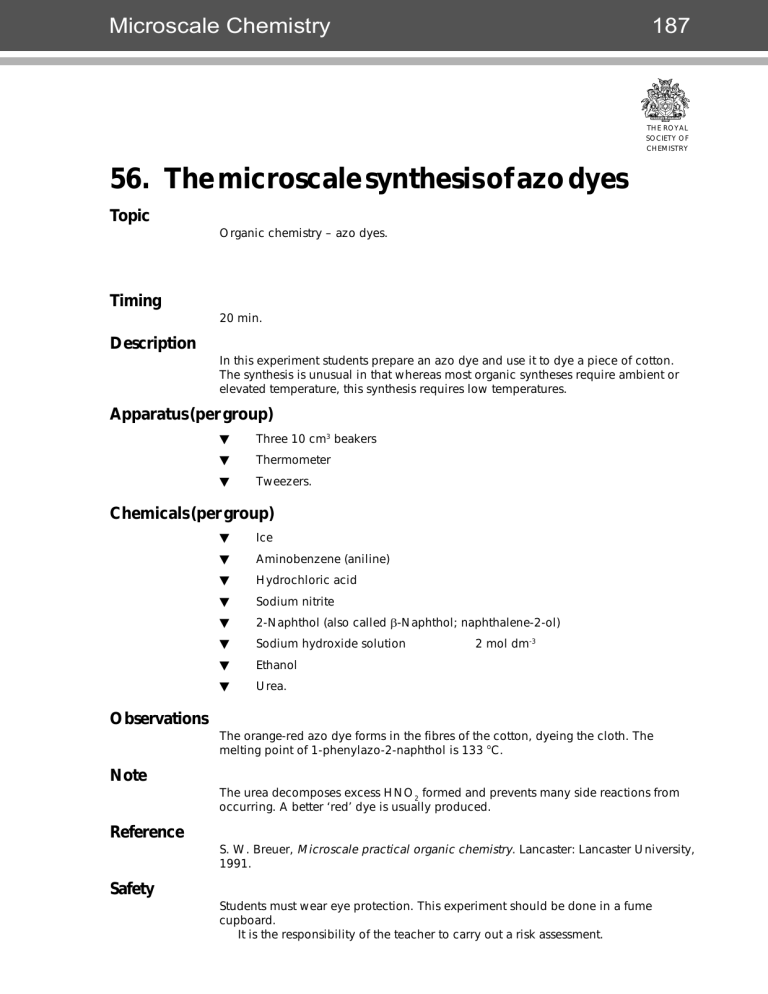
Microscale Chemistry 187
THE ROYAL
SOCIETY OF
CHEMISTRY
56. The microscale synthesis of azo dyes
Topic
Organic chemistry – azo dyes.
Level
Post-16.
Timing
20 min.
Description
In this experiment students prepare an azo dye and use it to dye a piece of cotton.
The synthesis is unusual in that whereas most organic syntheses require ambient or elevated temperature, this synthesis requires low temperatures.
Apparatus (per group)
▼ Three 10 cm 3 beakers
▼ Thermometer
▼ Tweezers.
Chemicals (per group)
▼
▼
▼
▼
▼
▼
▼
▼
Ice
Aminobenzene (aniline)
Hydrochloric acid
Sodium nitrite
2-Naphthol (also called
β
-Naphthol; naphthalene-2-ol)
Sodium hydroxide solution 2 mol dm -3
Ethanol
Urea.
Observations
The orange-red azo dye forms in the fibres of the cotton, dyeing the cloth. The melting point of 1-phenylazo-2-naphthol is 133 o C.
Note
The urea decomposes excess HNO
2
formed and prevents many side reactions from occurring. A better ‘red’ dye is usually produced.
Reference
S. W. Breuer, Microscale practical organic chemistry. Lancaster: Lancaster University,
1991.
Safety
Students must wear eye protection. This experiment should be done in a fume cupboard.
It is the responsibility of the teacher to carry out a risk assessment.
94 Microscale Chemistry
THE ROYAL
SOCIETY OF
CHEMISTRY
56. The microscale synthesis of azo dyes
In this experiment you will be synthesing an azo dye and using it to dye a piece of cotton.
The reactions are:
1. Diazotisation
NH
2
Aminobenzene
HCl / NaNO
2
< 5
°
C
2. Coupling
N
+
N Cl
–
+
OH
N
+
N Cl
–
2–Naphthol N
N
OH
Azo dye
Instructions
1.
Put eight drops of aminobenzene in a 10 cm 3 beaker and add 30 drops of deionised water followed by 15 drops of concentrated hydrochloric acid. Swirl the beaker and then put it in an ice bath.
2.
Weigh 0.15 g of sodium nitrite into another beaker and add 1 cm 3 of deionised water. Cool the beaker in the ice bath. Add one spatula of urea (this prevents side reactions occurring).
3.
Mix the contents of the two beakers together and keep in the ice bath.
4.
Weigh 0.45 g of 2-naphthol into another beaker and add 3 cm 3 of sodium hydroxide solution. Swirl to dissolve.
5.
Take a piece of cotton cloth 2 x 2 cm 2 and, using tweezers, dip it into the
2-naphthol solution. Allow the solution to completely soak the cotton.
6.
Dip the cloth completely into the diazonium salt solution. A red dye forms in the fibres, dyeing the cloth.
7.
Take the cloth out, wash it under the tap and leave to dry.
